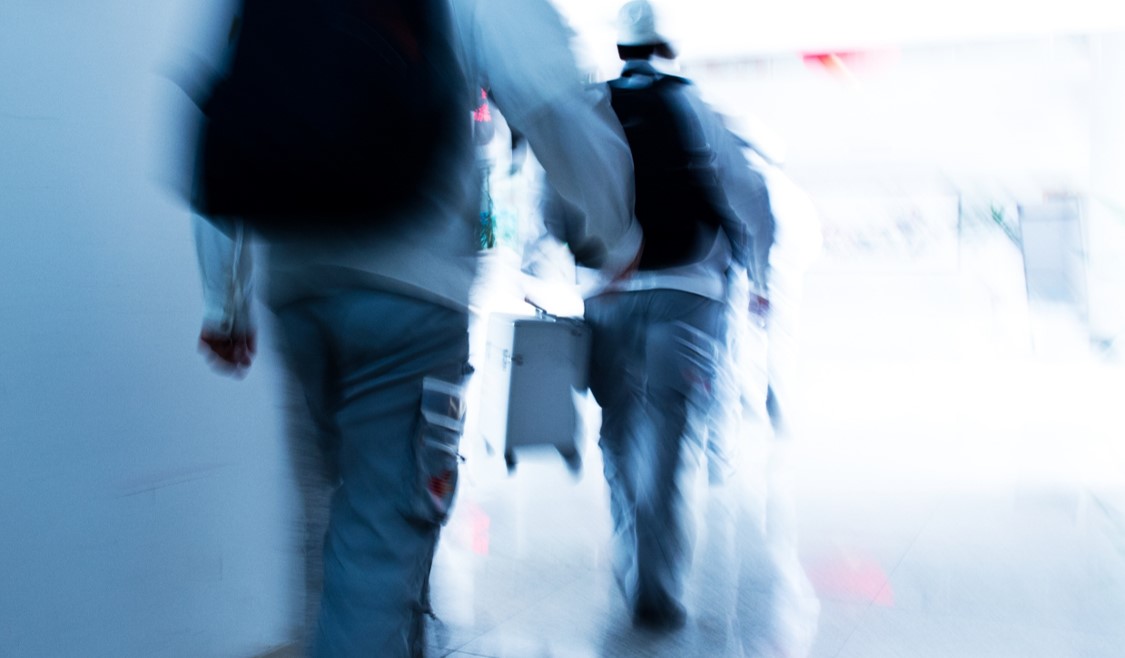
Tailgating vs collusion: how to mitigate external and internal threat
The daring feats of a ‘professional burglar’ serve as a stark reminder of the critical need for effective building security.
In a book on her adventures, Jenny Radcliffe, aka the People Hacker, demonstrates how easy it is to get into unauthorised areas by simply adopting a friendly demeanour, wearing convincing clothing such as a hi-vis jacket, and often carrying something apparently innocuous such as a clipboard or even a ladder!
Radcliffe’s pursuits have all been in the name of fostering greater awareness of security. But there are likely to be many similarly friendly and unassuming people whose intentions aren’t in the greater public interest. No building, however seemingly secure, can afford to be complacent.
Tools are only as effective as the people who use them. Radcliffe’s book discusses the frequent use of tailgating and collusion by thieves at security gates. While tailgating is a known security threat, the danger posed by collusion by staff with authorised access cannot be ignored.
Tailgating, or piggybacking, is following someone through an open door without authorisation. Even if there is no intent to deceive or cause harm, the follower is at fault, and it can expose employees and assets to unknown risks from outside agents.
Collusion is when individuals purposely let an unauthorised person in through a secured point, bypassing security measures. While the reasons may be innocent, and it could be as simple as someone forgetting their own keycard and temporarily borrowing a colleague’s – but equally a system that allows for this could leave you vulnerable.
In the graphic below, we have highlighted some of the steps that can be taken to improve your entrance security and help prevent tailgating and collusion. If you would like more detail, continue reading the blog below too…
Beyond physical barriers
A visual deterrent, such as a physical barrier, is a great starting point to curtail tailgating and collusion, but you need some ‘intelligence’ to mitigate risk further.
Fastlane Turnstiles technology makes thousands of calculations per second based on speed of passage, distance to the pedestrian behind and direction of movement, and can even detect luggage. It is this intelligent decision-making that can detect tailgating as close as 5mm whilst at the same time avoiding false alarms.
No pass-backs
Whilst intelligent turnstiles can detect unauthorised entry via tailgating and raise the alarm, detecting unauthorised entry via collusion is more difficult and requires other strategies and security measures to be taken to support even the most intelligent entrance control turnstiles.
Our Door Detective range works to reinforce access control systems by monitoring the throughput of open, access-controlled doors, corridors and passageways. This additional level of security adds sensitivity and signals activity such as unauthorised entrants, tailgating, collusion and obstruction, which is ideal for protecting internal doors in data centres, executive floors, laboratories and office environments.
Using multiple infrared beams from enclosures mounted close to door frames, Door Detective accurately monitors movement in both directions each time a person presents electronic credentials to pass through the doorway. Door Detective also enforces the one-card, one-person rule, with alarms signalling when someone passes in the opposite direction to that which has been authorised.
Control, monitor, and manage
Monitoring entrance control operations and analysing the resulting data will help you to identify abnormal traffic flow and attempted forced entries, flag up any procedures which aren’t being complied with by employees and allow you to rectify this to heighten building security further.
You can keep tabs on-site or from any location globally using Fastlane Connect, our web-based portal. Identifying those people involved in incidents – whether intentionally or not – reminds employees of the necessary security procedures and educates them on the risks.
Training staff about certain situations, such as a co-worker asking to borrow a keycard or a stranger sneaking in alongside an authorised person, cannot be overestimated. You’ll see greater building security if your employees follow procedures, respect protocol, and report abnormal behaviour.
Further Enhancements to Your Security
Biometric security is increasingly vital for enhancing and personalising entrance control systems. Using various identity and access verification methods such as fingerprinting, voice and iris recognition, biometrics can prevent collusion and ensure each employee has a unique set of traits.
Unlike keycards that could be shared or stolen, biometrics offer a more secure solution.
Integrating your access control system with CCTV is another crucial measure to consider. Turnstiles can detect forced entry or unauthorised access attempts, while cameras can capture images to identify intruders. Once an intruder is detected and identified as a friend or foe, a response plan must be in place to assess the threat level and act accordingly.
If an employee has accidentally caused the breach, a reduced response may be appropriate. If an unknown individual is detected, a heightened response may be necessary, such as locking surrounding doors or deploying on-site security guards.
A combination of the above measures and strategies would provide the most secure environment, but the level of security you require is dependent on a number of factors, such as the kind of assets you’re protecting, the layout of the building and the budget you have to work with.
Let us assess your internal and external threats, contact us today for an appointment – call +44 (0)208 890 5550 or email sales@idl.co.uk



